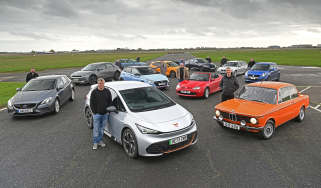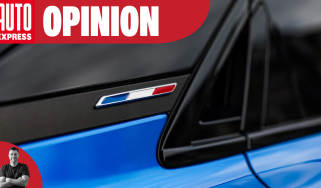Porsche Cayenne
Second-generation SUV is a class act
It’s seven years since Porsche first entered the SUV fray with the original Cayenne. The new version aims to build on its success with a redesigned exterior and interior. And from the outside, the initial signs are positive.
Despite a 40mm increase in wheelbase to improve cabin space, the latest model actually looks more compact and less clumsy than its predecessor.
As before, it shares its platform with the Touareg, but while their proportions are similar, the pair look very different.
The Cayenne’s 911-inspired headlights, long bonnet and intricate tail-lights provide a sportier appearance, while sharper detailing and the undoubted appeal of the Porsche badge give it a more commanding presence than the plain VW.
The cabin borrows heavily from other models in the line-up, with the same attractive centre console as the Panamera and the firm’s classy five-dial instrument pod ahead of the driver.
Leather trim, beautifully engineered switchgear and atmospheric cabin lighting all add to the sense of occasion. Our test car was fitted with upgraded leather and additional brushed aluminium trim, and buyers get a huge range of customisation options. However, even without dipping into the extras list, the Cayenne is a step ahead of the Infiniti and VW when it comes to quality.
Used - available now

2023 Lexus
UX
23,495 milesAutomaticPetrol2.0L
Cash £23,825
2022 Land Rover
Range Rover Sport
53,121 milesAutomaticPetrol2.0L
Cash £30,295
2023 Vauxhall
Corsa
32,630 milesManualPetrol1.2L
Cash £11,999
2022 Vauxhall
Grandland
25,817 milesManualPetrol1.2L
Cash £15,790The driver’s seat has an excellent range of adjustment and is very supportive, and there’s more room for passengers in the back than in the old car. The rear seats slide back and forth, while the backrests tilt, too. The 580-litre boot is wider but slightly shorter than the X5’s and offers identical space to the Touareg.
So far, so good, then, yet the driving experience is what really sets the Porsche apart. While the 3.0-litre V6 diesel pumps out the same 237bhp and 550Nm of torque as it does in the VW, the Cayenne feels more purposeful from behind the wheel. To start with, it has a sportier engine note and more urgent responses.
At 2,100kg, the car is 74kg lighter than its VW relative, but it recorded marginally slower performance figures at the test track. Take to the road, though, and the differences are barely perceptible, as both cars feel punchy and fast. The Tiptronic gearbox delivers smooth shifts, and our Cayenne’s optional sports steering wheel, complete with tactile shift paddles (£277), provides manual control of the smooth eight-speed transmission.
In corners, the Porsche is the most agile of our quartet. Body roll is minimal and it changes direction with less fuss than the VW. The steering is accurate, while the Cayenne also recorded the best stopping distances on test. With optional 20-inch alloys fitted, rather than the standard 18-inch rims, the low-speed ride is a little unforgiving, but it improves as speeds increase. And with less wind noise than the VW, plus better ride comfort than the BMW and Infiniti, it strikes a decent balance between comfort and dynamic ability.
At £44,178, the Porsche does command a price premium over the VW and, to a lesser extent, the BMW. But it justifies the extra outlay with its superior cabin, handling and refinement.
Details
Chart position: 1
WHY: Latest Cayenne range includes the sizzling Turbo and hi-tech hybrid models, but this diesel will be the biggest seller.



